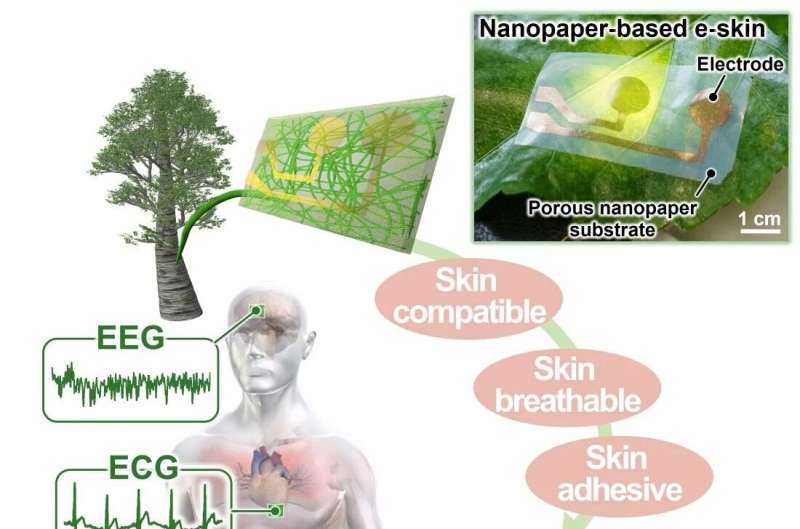
The idea of wirelessly gathering
electrical information from the body through the skin is not new. However, the
ideal electrode material must fulfill a significant list of criteria to be a
realistic candidate for use on patients. Researchers from Osaka University have
designed an electrode substrate derived from wood that appears to tick all the
boxes. Their findings have recently been published in Advanced Materials
Interfaces.
The electrodes needed for on-skin electronics are supported by a substrate material that makes effective contact with the skin. Choosing a substrate requires the consideration of numerous factors: Is it flexible and comfortable to wear, but still durable? Can the substrate be sterilized so that it can be reused? Does it stick well to the skin and allow the skin to breathe? Is the substrate environmentally sustainable to produce and dispose of?
Finding a candidate is therefore tricky, but the Osaka researchers believe they have designed the most promising one to date. Their cellulose-based material is essentially paper made up of tiny nanofibers, giving it the name "nanopaper e-skin," and it is the gaps between the fibers, whose size can be controlled, that give their substrate the edge.
"To get the best possible electrical signal it is important for a substrate to make good contact with the skin, which means it must be smooth. However, many examples of smooth materials are also very dense which severely reduces their breathability and results in user discomfort," says study author Teppei Araki. "Because our nanopaper is a mesh of very fine fibers, it maintains good contact with the skin, but also has pores meaning that water vapor can pass through, reducing inflammation and making it comfortable to wear," explains study first author Yintong Huang.
Once wet, the nanopaper could stick to skin because of the action of the water in the pores, and it was able to withstand 100 cycles of deformation on the forehead while maintaining function. The nanopaper could also be sterilized at high temperature.
"We believe that our nanopaper offers compatibility with both the body and the environment," says senior author Hirotaka Koga. "The availability, flexibility, skin-conformability and -breathability, thermal stability, toughness, biocompatibility, and environmental sustainability of our substrate all combine to make it a highly promising candidate for electrophysiological monitoring that we expect to easily translate into the clinic for the measurement of data such as ECGs."
These results provide a very promising step forward in the field of on-skin electronics and may be the jump needed for explosive developments when researchers combine techniques of flexible and sustainable electronics that they have developed.

 Previous page
Previous page Back to top
Back to top







